reviewed by Truman Perkins
Plants play a vital role in our lives as they not only provide us with oxygen but also act as a vibrant source of minerals, vitamins, potassium, fibre and many other nutrients essential for the human body to stay fit, be healthy and function well. Every human body needs food to survive, and most of the food for humans comes from plants.
Its fun to grow Veggies at Home but when you plan to grow Leafy Vegetables, it takes special efforts and care to be taken.
Contents

There are many varieties of food, rich in nutrients that come from plant such as, cauliflower, beetroot, carrot, potatoes, tomatoes, etc, however from all the food that comes from plants, leafy vegetables are considered to be those of highest food value in terms of its precious nutritive value that includes, high amount of fibre, calcium, minerals, antioxidants, vitamin A, C & K.
Furthermore, with its health benefits, it also helps in preventing various risk factors associated with different diseases such as heart diseases, blood pressure, obesity, diabetes, etc.
Including different varieties of leafy vegetables in our daily diet routine can provide numerous health benefits, and it can be proven to be quite useful in our modern living as well as in the long run.
Leafy vegetables are usually available in every market place, but the essence of growing them at the comfort of our home space is something else. Below we can discuss different benefits of growing leafy vegetables at home

Growing green vegetables at home can be very beneficial to health. It reduces the risk of being polluted and diluted with harmful substances and impurities. Since we undertake the responsibility of growing it and nurturing it to its best, it is all under our control to use as natural substances as possible, required for its growth. With this, we get to produce organic food free of artificial chemicals, fertilizers, and pesticides that are thereby, generally used by most of the producers outside. Providing organic food at home, therefore, promotes very healthy living and reduces many sorts of health risks.
The other foremost rather essential benefit of growing leafy vegetables at home is that, it is very cost-effective. The productional, operational, transport & additional costs charged by the marketers outside are almost cut down to your own minimal expense. It saves all the money charged for the product as well as the service provided to you in serving the leafy vegetables. You can substantially grow your leafy vegetables at your very own cost, and hence save all your money while still having the greens that you desire.
Growing your vegetables at home is something that supports productivity. You are involved if is physical, fun and productive. Planting leafy vegetables require movement of the hand and leg muscles, which is a great way to get some exercise. Exercise keeps your body healthy, mind fresh and essentially charged up. There's no better way to achieve the maximum physical health by the method of producing something essential. Thus, it is a great way to promote physical activity with also obtaining a great outcome.
As we have been learning since ever, plants are a great resource to human life as they give oxygen and inhale carbon dioxide. Planting greens in our houses, filters the air that we breathe, making it healthier. They also help in releasing moisture in the air by the methods of transpiration. Having them in our houses gives us a fresh feel and nature like vibe. All of this, in a way, generates a healthy environment and atmosphere in our homes.
As mentioned earlier, planting green leafy vegetables can be an outstanding sport as it involves physical movement with a productive outcome. Likewise, it can also be a great mood booster and stress reliever. Planting greens in your house will keep you happily engage in the process of growing them and taking care of them. They also give an activity change from the daily office routine work or even household works. Every human need some change in their regular schedule, planting leafy vegetables for your home can be one such change to pursue, feel fresh and reduce stress.
Lastly, planting green leafy vegetables in the house leads to more use of a healthy diet. The availability of the greens in the house, throughout the time, makes it likely to get consumed more often. It is also easier to directly pick the grown greens from inside your house and cook rather than going to the market, getting involved in the methods of purchasing, bringing home and continuing the rest procedure after that.
When it comes to variety, Indian greens offer great choices, suitable for different taste palates. Some of the Indian leafy vegetables include-
The above mentioned Indian leafy vegetables and their health benefits can be explained in the following ways-
Spinach is a very popular and highly consumed green vegetable in India. It is rich in calcium, which helps in strengthening the bones. It is also rich in fibre, protein, magnesium, minerals, vitamin A & C. Consumption of Spinach is very good for diabetic patients. It also helps in preventing the risks of cancer, asthma, and high blood pressure.
Methi is another leafy green consumed by a majority of people in India. It contains nutrients like iron, vitamin K, C, calcium and many other nutrients that are essential to control cholesterol and reduce body fats. Methi also helps in controlling blood sugar levels necessary for diabetic patients.
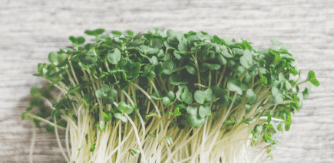
Cabbage is a leafy vegetable that is used in most of the dishes cooked in India. With its popularity and high usage, it also provides some great health benefits as it is packed with some essential nutrients such as protein, fibre, folate, magnesium, potassium vitamins & more. It helps in improving digestion, reducing high blood pressure and keeping the heart-healthy.

Mint leaves are put in individual dishes to enhance their taste. It is used in different recipes as well as drinks, to add a flavour. It contains nutrients such as Vitamin C, fibre, calcium, phosphorus, vitamin A and more. It prevents nausea, helps in indigestion, gas and other stomach diseases.

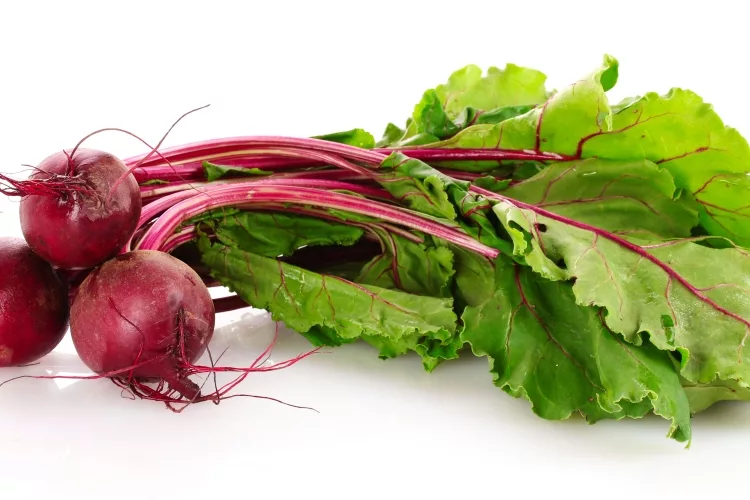
Beetroot leaves are the leaves of the popular beetroot plant and vegetable. They are edible and of high nutrient values such as vitamin B6, C, K, protein, fibre, magnesium, folate, etc. It helps in boosting immunity. It also helps with heart diseases and lowers the risk of blood cancer.
Radish leaves are the leaves of the undergrown Radish plant. They are a rich source of vitamin B6, A&C, magnesium, potassium, iron, calcium, phosphorus, etc. They are delicious to cure illness like fever, sore throat, inflammation. They are also suitable for body hydration.
Mustard leaves are originated from the north of India and are considered to have some fantastic nutritional health benefits. They are mostly found in winters. They are rich in protein, iron, thiamine, vitamin A, B6, E, copper, phosphorus, magnesium, potassium, folate and more. Mustard leaves are magnificent to lower the body cholesterol. They are also good at detoxifying the body and improving immunity.
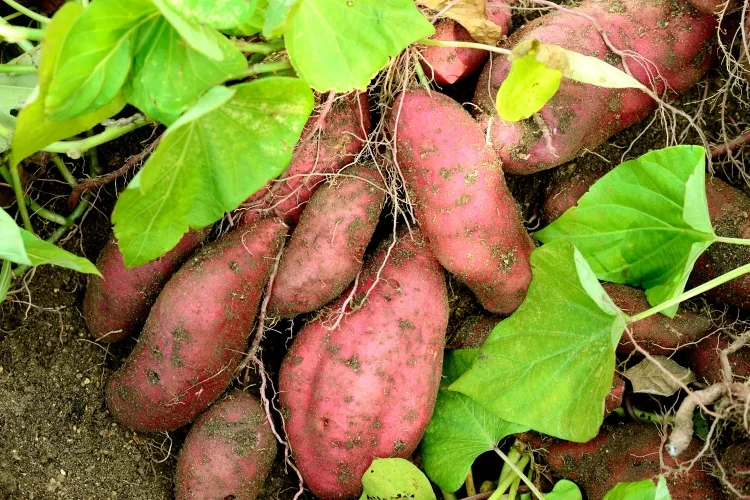
Sweet potato leaves have antioxidant properties. They are also packed with protein, vitamin A, B, K, minerals, potassium, calcium, and iron. They are suitable for a healthy brain and healthy gums. Vitamin A in the sweet potato leaves helps in reducing inflammation.
Dill leaves, better known as 'Shepu' in India, are consumed in most of the houses by cooking them. The sheets are fragile and feathery in appearance. They are also put in Indian Dal and consumed in that manner. Dill leaves are a good source of protein, carbohydrate, and fibre. They are useful to cure several diseases such as fever, cold, nerve pain and infections. Dill leaves also help in boosting digestion.
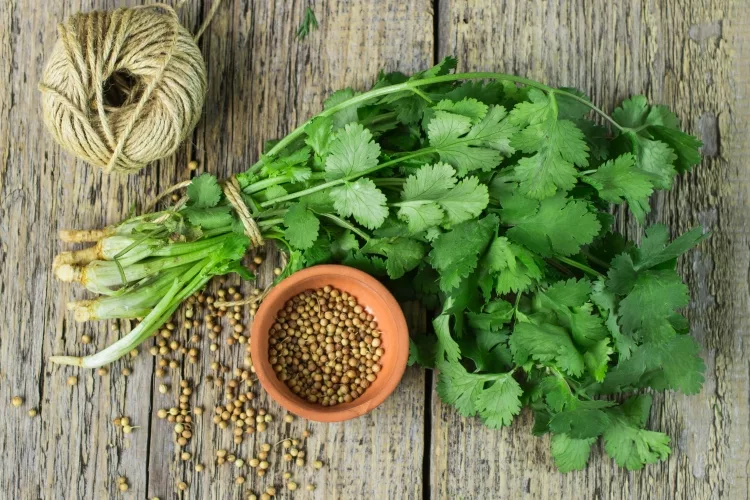
Coriander leaves are trendy in India. They are used in almost every other dish, soup, and salads as a flavouring ingredient. They are packed with essential vitamins like vitamin A, C, E, K & B6. They also contain dietary fibre, calcium, magnesium, copper, etc. Coriander leaves are perfect for diabetic patients. They are also excellent to treat eye diseases because of their antioxidant properties. They are even suitable for the nervous system and also lowers cholesterol and cures a lot of other conditions.
Drumstick greens are the leaves of the popular vegetable 'Drumstick' used in many homes in India. Like the vegetable, its leaves are also made to use by cooking them. They are full of Vitamins, iron, magnesium, and protein. They help in lowering diabetes, detoxifying the body, and improving digestion. They also have antioxidants, which help to lower blood pressure.
Cauliflower greens are the outer leaves of the Cauliflower vegetable. Not many people in India use them, but they are of good health benefit as they contain vitamin C, K, B6, potassium, magnesium, calcium, iron, phosphorus, zinc and many other nutritive elements. They can be used to help weight loss. Their high fibre content also improves digestion.
Turnips are the plants grown underground. Their leaves are made to use in India by cooking them. These are high in nutritive value and very low in calories. They are a rich source of calcium, magnesium, phosphorus, zinc, and iron. Because of the high calcium content, these greens are also perfect for bone health.
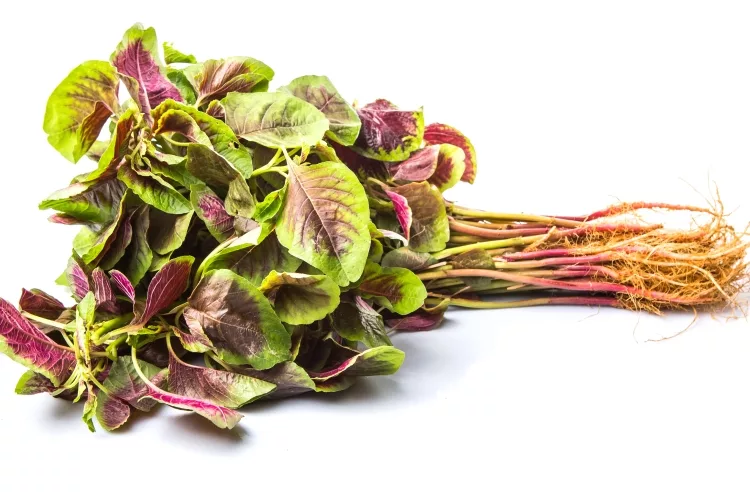
Amaranth leaves are cooked and consumed by many Indian households. It has a spinach-like appearance. It is rich in vitamins and other power-packed nutrients like vitamins, protein, fibre, iron, magnesium, etc. It helps in reducing weight, lowering cholesterol and boosting immunity.
Spring onion greens are the upper green portion of the spring onions. They are used as an addition and for garnishing in many meals including, rice and soups. They contain the right amount of protein, carbohydrate, fibre, magnesium, potassium and several vitamins. They are good at aiding digestion, lowering cholesterol and blood sugar levels. They are also suitable for eyesight.
Tamarind leaves are used as a kind of herb in India. They are used for various medical uses and to heal wounds. Their consumption is also safe and healthy as they contain nutrients like vitamin C, protein and carbohydrates. They are used to treat ulcers and to cure diseases like malaria and diabetes.
Turmeric leaves are the leaves of the plant used to produce turmeric. They are very beneficial as they contain many antiseptic and antibacterial properties that are essential for healing wounds. They are used in various dishes to improve digestion. They are also used in many ayurvedic medicines.
Purslane leaves are thick leaves having a sour and salty taste. They are not very popular all over India but have some great health benefits. They are very low in calorie count and are a rich source of vitamin A. They also contain omega-three fatty acids, which are very good for reducing the risk of strokes or heart diseases.
- Colocasia leaves are commonly found in many Indian regions but are not very widely used. They are made to use in certain areas by cooking them. They cannot be consumed raw. They contain good nutritive value having several vitamins, iron, calcium, copper, manganese and many others. They help in the development of the brain, controlling blood pressure and also in preventing diseases like anemia
- Malabar Spinach known as Pui Saag in India is used to prepare a full-fledge meal out of the leaves. It is rich in vitamin C, carbohydrates, protein, and energy count. It has antioxidants that protect from cancer. It also nourishes the eye and is also suitable for heart diseases.
Growing your leafy vegetables at home can be a fascinating thing to do. Below are step by step methods that will well describe how you can improve your green plants in pots at home
As fun of activity of planting your leafy vegetable is, some tips and preventions should be carried forward to achieve a fully grown healthy leafy vegetable plant.
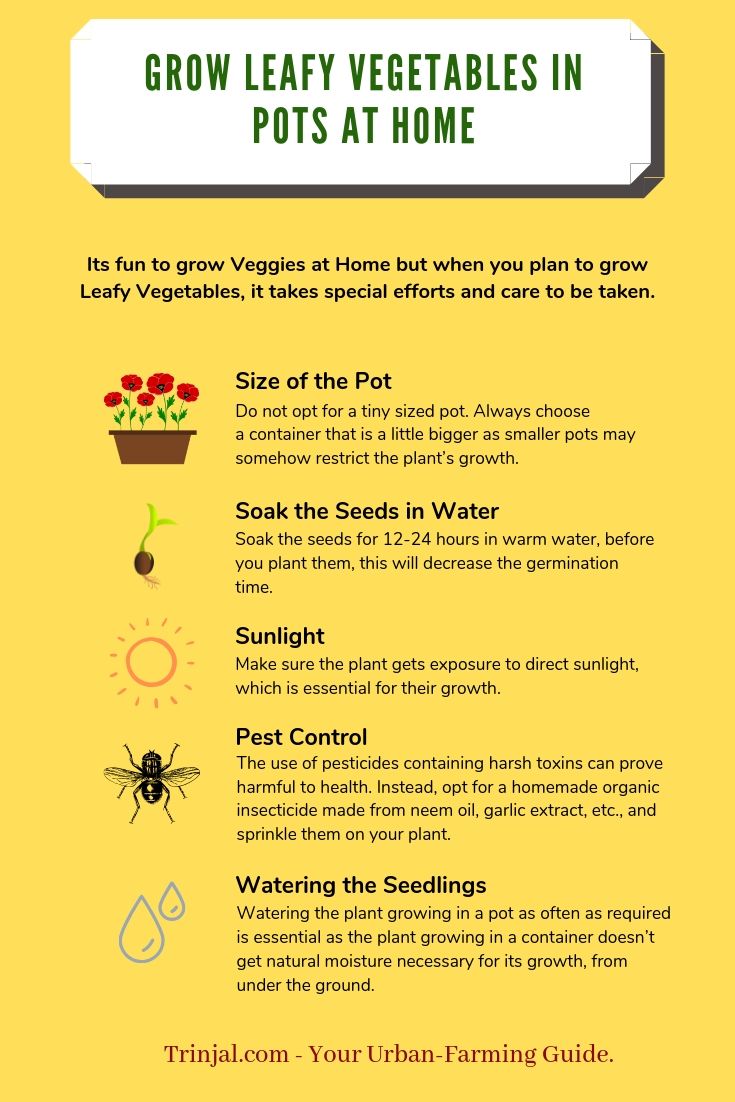
Tips & Prevention to be taken while planting your leafy vegetable-
With all this, you are growing leafy vegetables at home not just benefits in one way but many ways altogether. It makes way for some great health benefits, monetary benefits and a lovely atmosphere at home. Therefore, growing leafy vegetables at the comfort of your home space should be considered more often, to gain so many significant advantages and happy living.
 |
 |
 |
 |

About Truman Perkins
Truman Perkins is a Detroit-based SEO consultant who's been in the business for over a decade. He got his start helping friends and clients get their websites off the ground, and he continues to do so today. In his free time, Truman enjoys learning and writing about gardening - something he believes is a natural stress reliever. He lives with his wife, Jenny, and their twins in Detroit.
 |
 |
 |
 |
Get new FREE Gifts. Or latest free growing e-books from our latest works.
Disable Ad block to reveal all the links. Once done, hit a button below
 |
 |
 |
 |